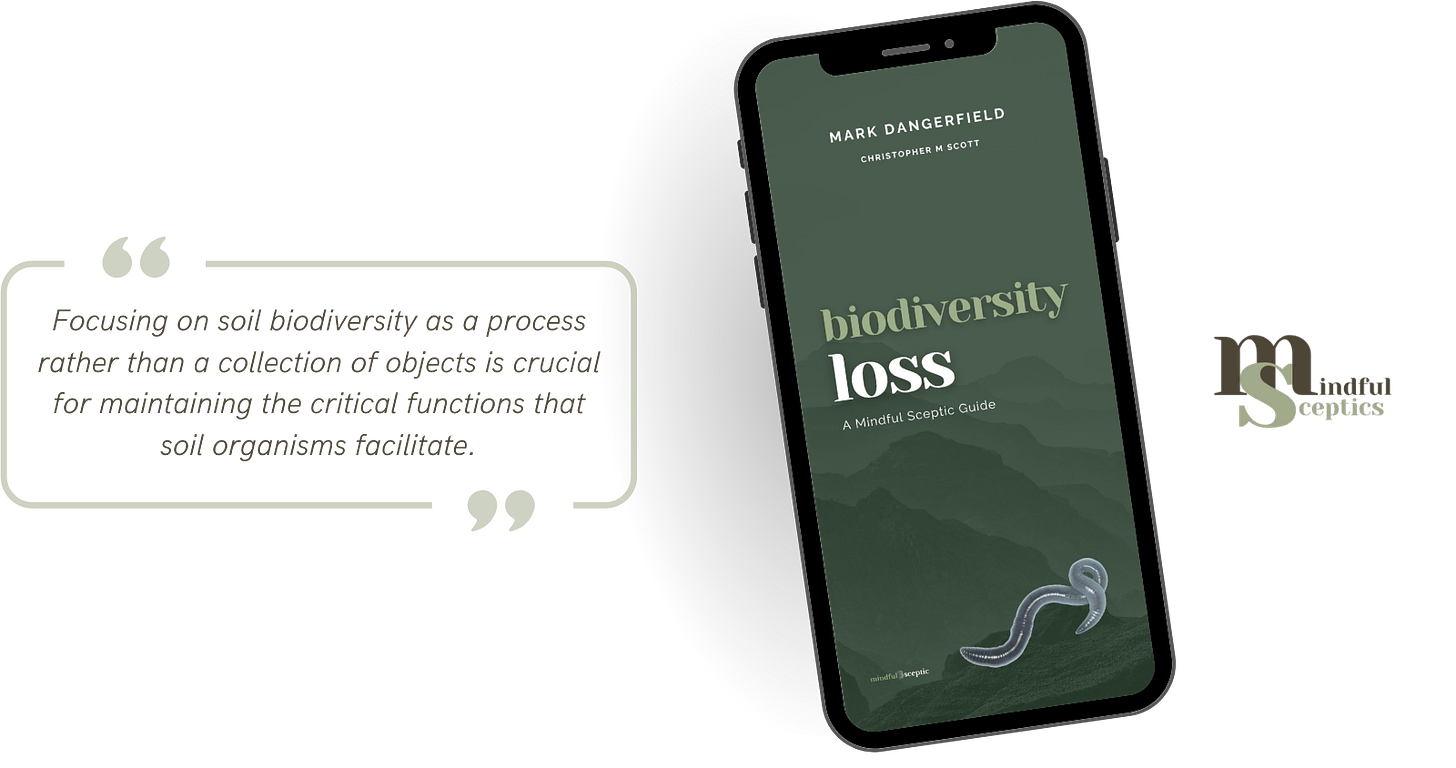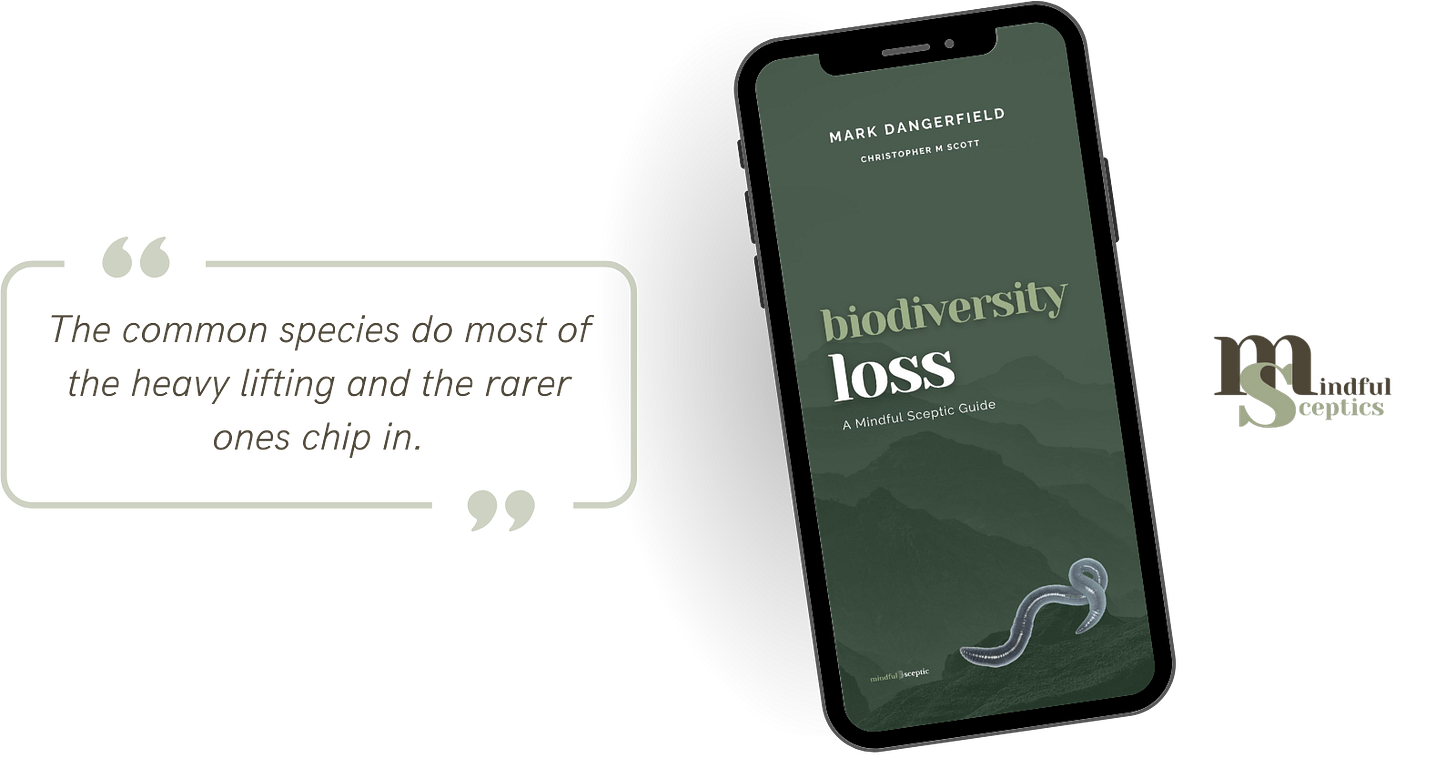The conservation movement sells pandas and polar bears because their cuteness attracts donations. Soil microbes don’t photograph well for fundraising brochures, yet they’re the only thing standing between civilisation and collapse.
But we ignore them nonetheless.
Core Idea
Conservation has made a fatal error in marketing.
The entire apparatus from World Wildlife Fund campaigns to nature documentaries fixates on charismatic megafauna while ignoring the biological engine that actually keeps humans alive. Every year, millions of dollars are spent on saving photogenic species that contribute little to ecosystem function, while the invisible workers beneath our feet receive virtually no attention despite being essential for food production.
This misdirection is a huge mistake.
We’ve built an entire conservation narrative around emotional appeal rather than ecological necessity. The panda gets the poster; the soil bacteria get forgotten.
Meanwhile, 8 billion people depend on what happens in dirt, not what poses for National Geographic.
Counterpoint
The illusion runs deeper than poor resource allocation. Conservation messaging has trained the public to believe that saving nature means protecting the rare and the beautiful.
This myth of iconic species as environmental proxies has created a fundamental disconnect between what we think matters and what actually sustains us. And it’s an easy sell, given humans are wired to protect forward-facing eyes.
But consider the mathematics of human impact… 96% of mammal biomass consists of humans and livestock, leaving just 4% for all wild mammals combined. Yet conservation efforts pour disproportionate resources into that tiny fraction while largely ignoring the biological processes that determine whether agriculture continues to function.
The uncomfortable truth is that rare species conservation is largely irrelevant to human survival. If every critically endangered species on the IUCN Red List vanished tomorrow, agriculture would continue. Humans would still till soil, plant grains, and rear livestock. The ecological machinery would persist because nature has an uncanny knack for filling available niches with something that works.
However, losing soil biodiversity, which includes the tens of thousands of species living in each square meter of dirt, would lead to the collapse of the entire food system. These organisms facilitate nutrient transfer, maintain soil structure, and enable the basic biological processes that convert sunlight into the 22 trillion kilocalories humans consume daily. Without them, the soil becomes inert.
Without functional soil, agriculture fails.
Without agriculture, civilisation ends.
This ‘dead cat on the table’ serves as a stark reminder that conservation has prioritised emotional satisfaction over ecological necessity. It’s easier to rally support for a tiger than for mycorrhizal fungi, but the fungi determine whether crops grow. The tiger is a luxury; the fungi are infrastructure.
Thought Challenge
Next time you see a conservation campaign, ask yourself what percentage of the 22 trillion daily kilocalories humans require comes from the species being promoted? If the answer approaches zero, consider why resources are directed there rather than toward soil health research, agricultural biodiversity programs, or the microbial communities that underpin food security.
Examine your own food system assumptions. Visit a working farm and ask what the farmer considers most critical to continued production. It won’t be the wildlife corridor for endangered species; it will be soil organic matter, microbial activity, and the biological processes that maintain fertility across growing seasons.
Closing Reflection
Conservation resources are finite.
Every dollar spent on panda publicity is a dollar not invested in soil research or agricultural sustainability. The pandas may disappear regardless, but functional soil biodiversity is negotiable only if you’re comfortable with famine.
Real environmental stewardship requires the intellectual discipline to focus on what actually sustains human civilisation, not what makes for compelling fundraising materials.
The soil doesn’t need our sympathy; it needs our attention.
Evidence Support
Cardinale, B. J., Duffy, J. E., Gonzalez, A., Hooper, D. U., Perrings, C., Venail, P., ... & Naeem, S. (2012). Biodiversity loss and its impact on humanity. Nature, 486(7401), 59-67.
TL;DR... reviews hundreds of experiments, finding that biodiversity loss reduces the efficiency by which ecological communities capture resources, produce biomass, decompose, and recycle biologically essential nutrients. The authors show that the majority of these functions are performed by common species, while rare species rarely drive these main flows, though they can provide redundancy or insurance.
Relevance to Insight... a decline in overall species diversity—especially in common species—undermines key ecosystem services on which human well-being rests, providing direct scientific evidence for prioritising the common over purely rare-species conservation for ecosystem stability and services.
Loreau, M., & de Mazancourt, C. (2013). Biodiversity and ecosystem stability: A synthesis of underlying mechanisms. Ecology Letters, 16(s1), 106-115.
TL;DR... synthesises the mechanisms by which biodiversity contributes to ecosystem functioning and stability, concluding that overall diversity, and especially the abundance of functionally important species, buffers ecosystems against environmental fluctuations. The research emphasises redundancy and insurance, showing that stability increases with the number and dominance of species contributing to key functions.
Relevance to Insight... supports the notion that ecosystem resilience and service delivery depend on common, functionally important species, rather than the mere presence of rare species—reinforcing the priority of maintaining “ecosystem engineers” for human security.
Bardgett, R. D., & van der Putten, W. H. (2014). Belowground biodiversity and ecosystem functioning. Nature, 515(7528), 505-511.
TL;DR... crucial role of soil biodiversity—especially diverse and abundant soil microbes and invertebrates—for nutrient cycling, soil structure, and plant productivity. Highlights that the abundance and composition of soil biota underpin soil health and ecosystem service delivery, particularly for food security.
Relevance to Insight... strongly backs the statement that “the biology beneath our feet is critical to the future of humanity,” making the case that soil biodiversity (often common, abundant taxa) is an essential target for conservation to maintain ecosystem resilience and human well-being.
Winfree, R., Fox, J. W., Williams, N. M., Reilly, J. R., & Cariveau, D. P. (2015). Abundance of common species, not species richness, drives delivery of a real-world ecosystem service. Ecology Letters, 18(7), 626-635.
TL;DR... global data set on pollination services in wild and agricultural systems, shows that ecosystem services—in this case, crop pollination—are largely driven by the most common pollinator species, with rare species contributing little to net service delivery.
Relevance to Insight… direct empirical evidence for the argument that ecosystem services for human benefit depend much more on the population and health of common species, supporting the study’s central claim over rare-species-focused conservation.
Soliveres, S., van der Plas, F., Manning, P., Prati, D., Gossner, M. M., Renner, S. C., ... & Allan, E. (2016). Biodiversity at multiple trophic levels is needed for ecosystem multifunctionality. Nature, 536(7617), 456-459.
TL;DR... large-scale field experiment demonstrates that ecosystem functioning (e.g., carbon storage, nutrient cycling, pest control) depends on biodiversity across multiple trophic levels, but is primarily sustained by abundant species in each level. Loss of these common, functionally important species leads to sharp declines in multifunctionality.
Relevance to Insight... loss of common species across taxonomic groups degrades multiple ecosystem services simultaneously. This research underlines why “conservation for the many” is essential for resilience in food production, human health, and ecological stability.
Together, these research papers form a robust foundation for the insight that ecosystem services essential to society are provided by abundant, common species and complex soil communities, not primarily by rare or endangered species. They also explain why biodiversity policy and conservation should prioritise the maintenance of functioning, abundant biotic communities that support human well-being and ecosystem stability.






